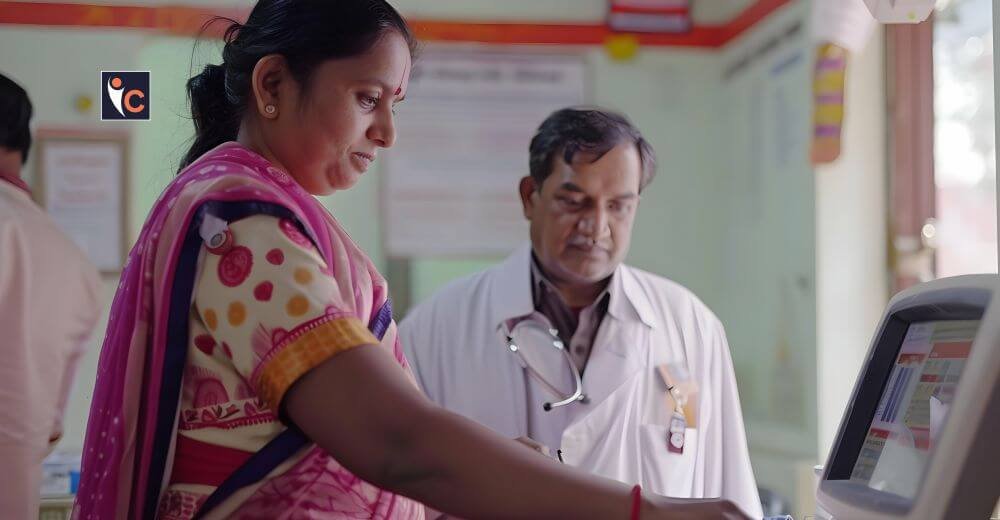Significant obstacles stand in the way of attaining universal health coverage in India due to the glaring differences in healthcare between the urban and rural areas. Since around 70% of people live in rural areas, these groups have worse health outcomes as a result of the unequal distribution of healthcare resources.
This article delves into the root causes of these inequalities and then gives recommendations on how to get rid of this gap, seeking equity in healthcare.
Healthcare Infrastructure
This is an extremely high level of bias toward urban areas in India in the context of healthcare facility distribution. All the basic healthcare facilities are usually absent in the rural areas, whereas modern hospitals and specialized treatment are available in cities.
There is also more critical deficiency in medical services in rural areas since only 20% of all healthcare facilities reportedly exist in that area. For example, many villages do not have full-time doctors. The doctor-to-population ratio is below that which WHO researchers say.
Economic Barriers
Economic constraints indeed severely limit access to healthcare services in rural India. Out-of-pocket costs are formidable for many families, discouraging them from seeking medical care; still, most families seek loans or sales of assets to pay for care.
Even under government programs such as Ayushman Bharat and Pradhan Mantri Jan Arogya Yojana (PM-JAY), which are an effort at offering health insurance to economically poor families, there is still a great deal of the absence of access and awareness. Reports have quoted that close to 90% of rural people do not have good health insurance, making them even more vulnerable financially in case of medical emergencies.
Socio-economic Factors
Access to healthcare is made more difficult by social determinants like gender dynamics, income levels, and educational attainment. In rural communities, women frequently put the health of their families before their own, which results in medical concerns being neglected.
Furthermore, because of institutional injustices, underprivileged populations like Scheduled Castes (SCs) and Scheduled Tribes (STs) have even lower rates of healthcare consumption.
Strengthening the Healthcare Workforce
Improving access requires a healthcare workforce that is widely dispersed. Scholarships and loan repayment plans are two examples of incentives that can persuade recent medical graduates to practice in rural regions. Training initiatives for community health workers can also improve grassroots service delivery. Community Health Officers (CHOs) and other mid-level healthcare professionals can help close service delivery gaps and guarantee continuity of care.
Leveraging Technology
To close the gap between urban and rural areas, technology might be quite important. Rural patients and metropolitan specialists are increasingly being connected by telemedicine efforts, allowing for remote consultations that lessen the stress of travel. By providing basic treatments and preventive care directly to underprivileged populations, mobile clinics are also useful alternatives. These developments are essential for meeting urgent medical demands and building enduring bonds between patients and healthcare professionals.
Addressing Economic Barriers
Increasing the number of people with health insurance is essential to reducing the financial obstacles that rural communities confront. In addition to government initiatives like PM-JAY, efforts should be made to inform rural populations about the services that are accessible. Additionally, programs that lower out-of-pocket costs, such free pharmacological treatments and diagnostic programs, might lessen some of the financial strains related to seeking medical attention.
Empowering Communities
Promoting a proactive approach to health requires significant community involvement. Health literacy-promoting educational initiatives might enable people to make knowledgeable decisions regarding their health. A network of community health advocates who are prepared to address healthcare issues locally can be established by providing basic life support and emergency care training to local volunteers.
Conclusion
One of the major deterrents to achieving universal health coverage is the obvious differences between urban and rural settings in terms of healthcare delivery. This will necessitate a multi-pronged approach. There is a need to strengthen the health system, particularly in the rural areas, through an increase in the number of medical facilities and personnel. Easily available healthcare along with low-cost services, such as government health insurance and other schemes and subsidies for medicines prescribed can help to remove many of the fiscal barriers.
Socio-economic problems need focused interventions strengthening poor communities and women and disadvantaged groups like migrants. Technology can be useful in distant, specialist treatment and bridge geographical gaps while telemedicine and mobile health technologies will prove crucial in making this happen.
Health education and community engagement programs facilitate improvement in preventative health care and empower the public with knowledge to make informed decisions in health matters. Implementation of these strategies brings India closer to the desirable moment when health care will be available, attainable, accessible to all persons irrespective of the geographical or social background.
Read More – Click Here





